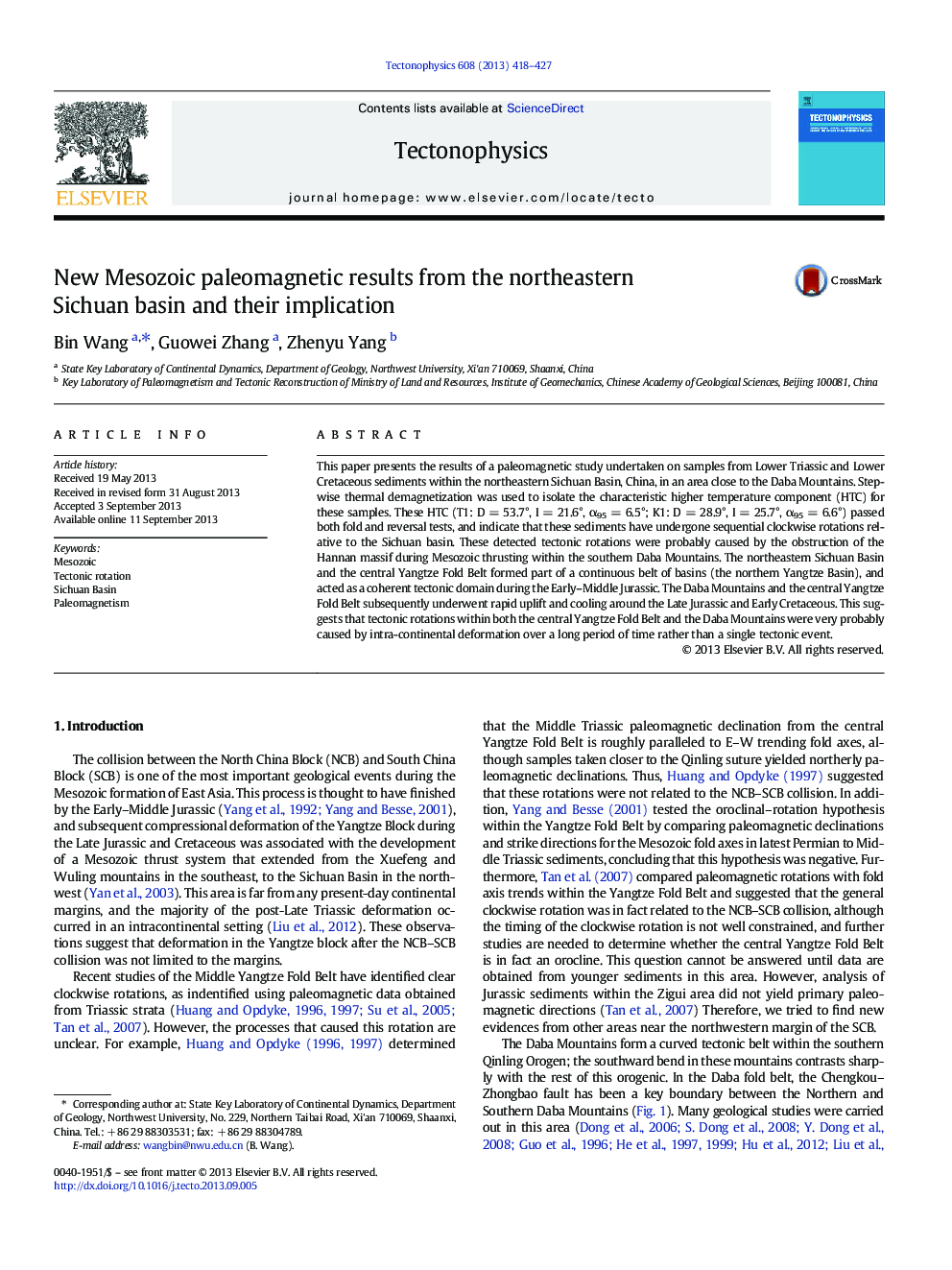| Article ID | Journal | Published Year | Pages | File Type |
|---|---|---|---|---|
| 6433961 | Tectonophysics | 2013 | 10 Pages |
â¢A paleomagnetic work was carried out in the Mesozoic strata near the Daba Mountain.â¢Characteristic higher temperature components passed fold test and reversal test.â¢Our results indicated series of clockwise rotation relative to the Sichuan basin.â¢These rotations were conducted by obstruction of the Hannan block during thrusting.â¢Rotations in the Middle Yangtze and Daba areas very probably had similar mechanism.
This paper presents the results of a paleomagnetic study undertaken on samples from Lower Triassic and Lower Cretaceous sediments within the northeastern Sichuan Basin, China, in an area close to the Daba Mountains. Stepwise thermal demagnetization was used to isolate the characteristic higher temperature component (HTC) for these samples. These HTC (T1: D = 53.7°, I = 21.6°, α95 = 6.5°; K1: D = 28.9°, I = 25.7°, α95 = 6.6°) passed both fold and reversal tests, and indicate that these sediments have undergone sequential clockwise rotations relative to the Sichuan basin. These detected tectonic rotations were probably caused by the obstruction of the Hannan massif during Mesozoic thrusting within the southern Daba Mountains. The northeastern Sichuan Basin and the central Yangtze Fold Belt formed part of a continuous belt of basins (the northern Yangtze Basin), and acted as a coherent tectonic domain during the Early-Middle Jurassic. The Daba Mountains and the central Yangtze Fold Belt subsequently underwent rapid uplift and cooling around the Late Jurassic and Early Cretaceous. This suggests that tectonic rotations within both the central Yangtze Fold Belt and the Daba Mountains were very probably caused by intra-continental deformation over a long period of time rather than a single tectonic event.
